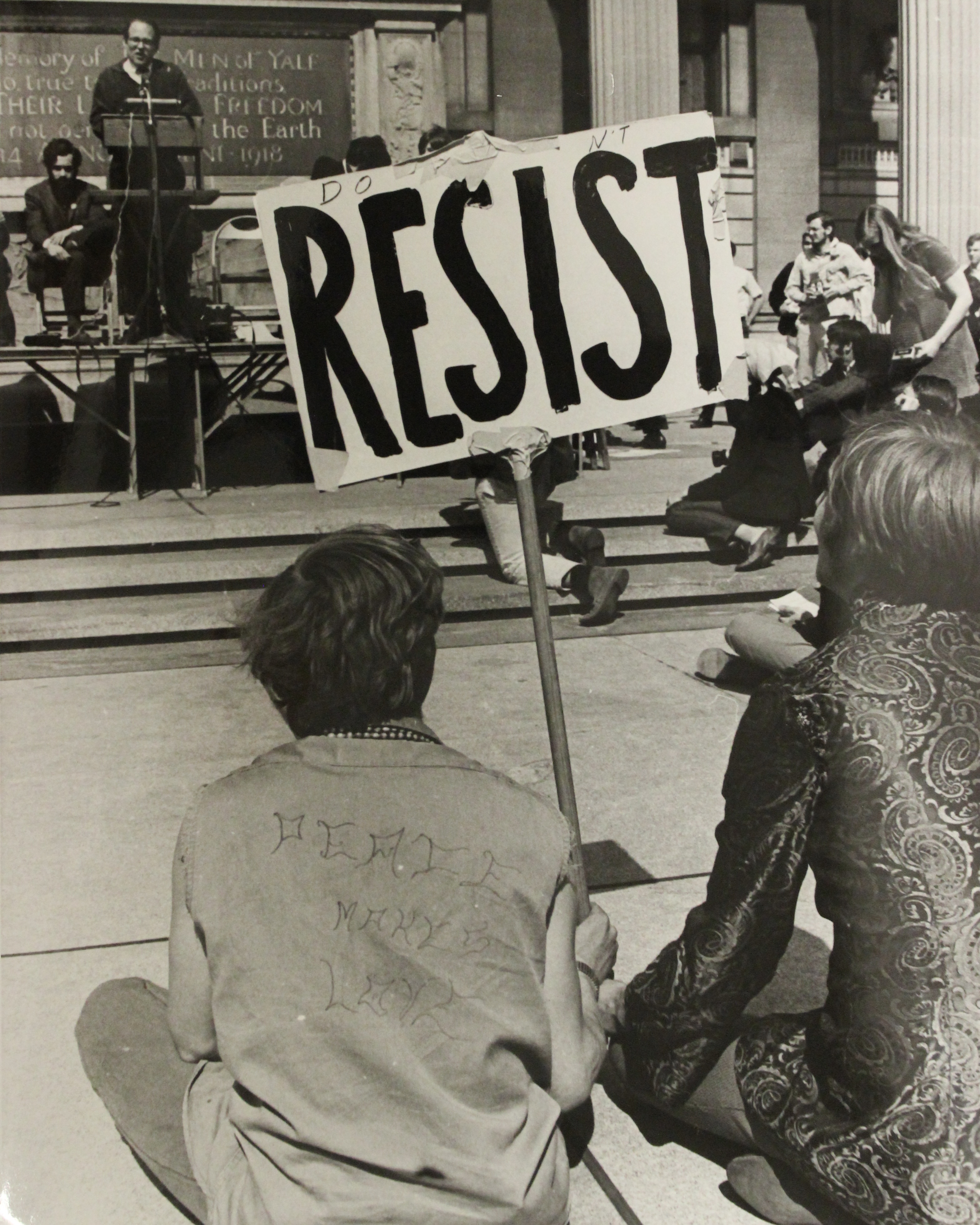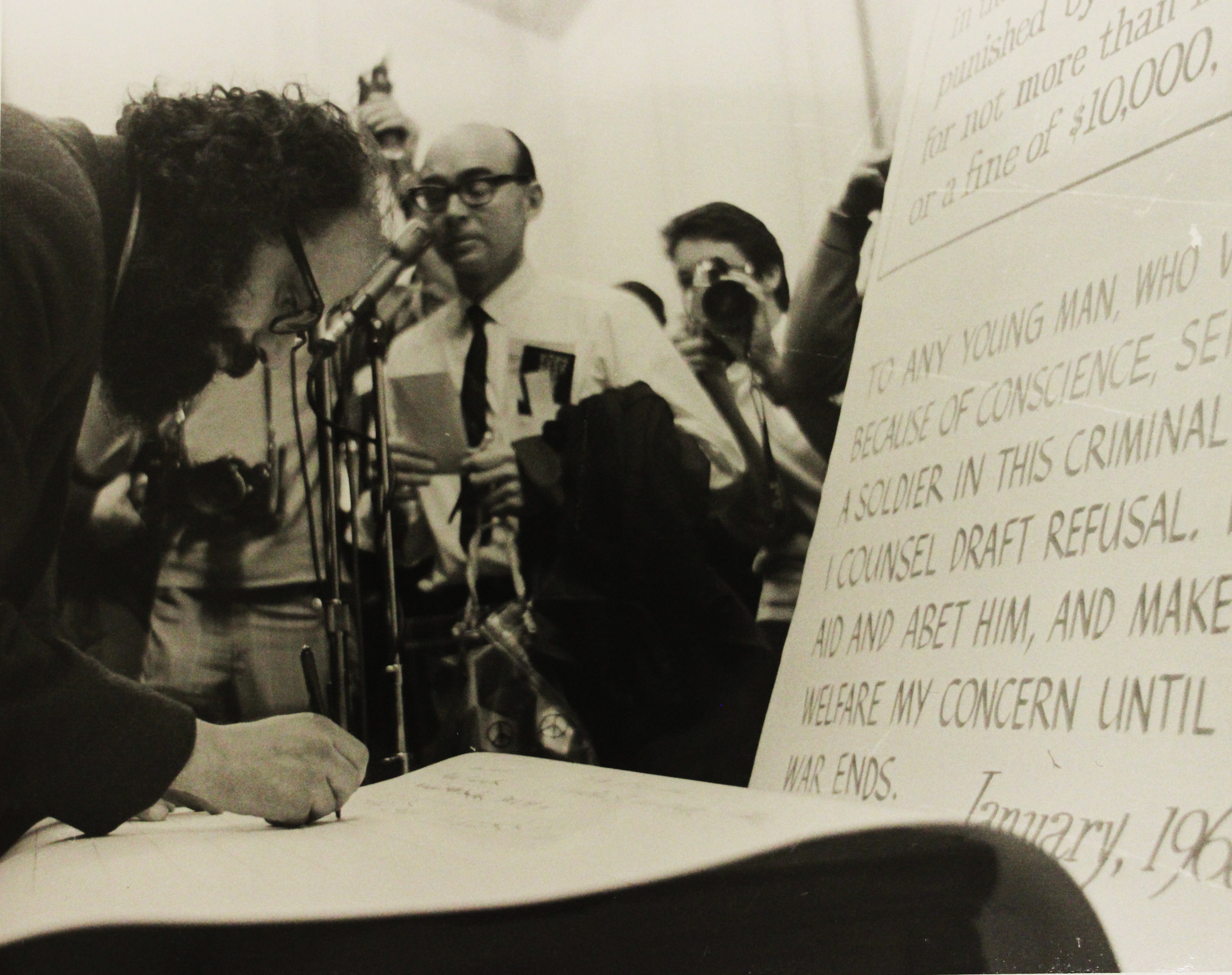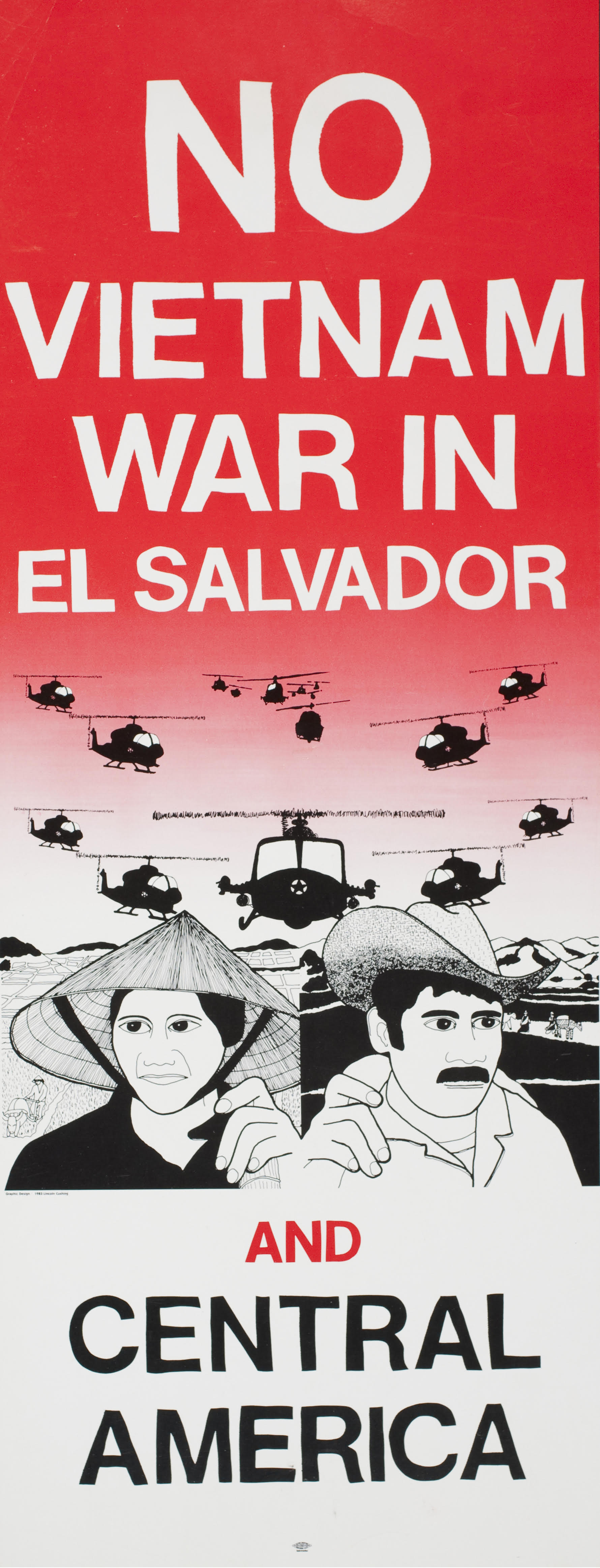Escaping the Vietnam Draft

Is leaving your country ever an act of patriotism?
Seeking Sanctuary
Between 1965 and 1975, almost 70,000 young Americans crossed into Canada to avoid being drafted to serve in the Vietnam War.
Though the Vietnam War began in 1955, the U.S. did not put frontline troops on the ground until after North Vietnamese troops torpedoed a U.S. destroyer in the Gulf of Tonkin in 1964.
Selective Service System registration had existed for decades, but now young men aged 18-26 faced the prospect of imminent deployment to Vietnam, where they would be expected to fight a bloody war for a cause many did not believe in.
No man has the right to take a man for two years and train him to be a killer. A man should decide what he wants to do with his life.
– Stokely Carmichael, speech at University of California Berkeley, October 29, 1966
Hell no, we won't go!

The anti-Vietnam War movement grew in close synergy with the Civil Rights and Counterculture movements sweeping through the United States. College campuses like UC Berkeley were at the center of this political activism.
Although many students were able to receive an official “2-S” draft deferment, young men who were classified “1-A” were expected to report for duty. As a last resort, some of those determined to escape the draft chose to flee the country. These refugees were largely white, educated and middle-class, with the resources to fund an international move.
Many young people planning to leave the country first headed west to California, where the Counterculture movement had already spawned a large network of anti-war and anti-draft groups. From there, they migrated up to Washington and crossed over the Canadian border.
To Canada
I couldn't go to Vietnam... so it came down to a choice between five years in Leavenworth and coming up here.
– American exile in Canada, 1968
Early draft evaders had to be careful about what they told Canadian immigration officials. But after 1969, when the Canadian government ordered border guards not to inquire about U.S. migrants’ military status, moving north became a more straightforward process. Mark Satin's Manual for Draft-Age Immigrants to Canada, first published in 1968, provided step-by-step instructions for legal immigration to Canada. It sold over 100,000 copies.

Berkeley at the Center
Throughout the 1960s, Berkeley emerged as the nerve center of a sophisticated network that helped thousands of young men escape to the north. In 1965, after a 35-hour teach-in attended by more than 35,000 people at UC Berkeley, the Vietnam Day Committee (VDC) was founded. It soon became the West Coast's most sophisticated draft resistance network. The VDC headquarters on Fulton Street became mission control for the anti-Vietnam War draft movement. From here, activists coordinated with 2,000 draft counselors nationwide.
Vietnam Day, Berkeley, 21-22 May 1965. Pacific Film Archive Film and Video Collection, UC Berkeley.
At the peak of the movement, safe houses dotted Telegraph Avenue. Local businesses, knowing customers might be FBI informants, developed coded conversations and warning systems. These precautions were not unwarranted. The VDC headquarters were bombed in 1966, shortly after Ronald Reagan had labelled the group “treasonous.”
Aftermath
While “draft dodgers” were able to settle legally in Canada with relative ease, the emotional and psychological toll of their exile was often significant. Resisters were sometimes disowned by family members, and some anti-war activists criticized them as traitors and cowards, who selfishly chose to flee rather than to stay and actively protest the war.
David Harris, Joan Baez, and Ira Sandperl speak on the necessity of resistance to the draft. Recorded at UC Berkeley, 9 November 1968.
In 1977, President Carter offered amnesty for draft evaders and deserters: about half of the Vietnam War resisters eventually chose to return.

